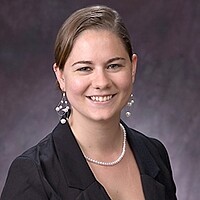Cars Land: New park hopes to boost Walt Disney Co.'s fortunes
The newest addition to Disneyland’s California Adventure Park opened last week to great fanfare—and high expectations. Cars Land, a theme park based around the popular animated “Cars” movies, is being touted by Disney as a way to reverse the downward trend in its theme park revenues. It is the first new “land” to open at Disney’s twin Anaheim parks in ten years. California Adventure Park, where Cars Land will call home, opened its gates in 2001.
The June 15th opening day was well attended. Media reports described hundreds of fans, many of them die-hard “Cars” groupies, camped outside the gates overnight for a chance to be part of the opening surge. Thousands more joined them by mid-morning, exploring a “Main Street” boulevard designed to mimic the movie’s nostalgic Route 66.
But park enthusiasts were not the only ones watching the unveiling with interest. The wizards of Wall Street were also paying close attention, with analysts across the industry weighing in on one of Walt Disney Co.’s biggest recent gambles. And there's an added layer of intrigue in the Disney boardroom: Tom Staggs, the company's theme park czar, is currently one of the leading candidates to succeed Bob Iger as CEO.
Cars Land is only part of a $1.1 billion, four-year overhaul by the entertainment behemoth, specifically designed to boost attendance at the amusement complex. Disney management has been forthright about their own hopes for the additions, as well as their disappointment in California Adventure’s perceived under-performance over the past decade.
"We knew that this was going to be an important attraction," Kathy Mangum, executive producer of Walt Disney Imagineering, told The Los Angeles Times a few days before Cars Land opened to the public, "because it was going to have to make the park."
So far the reviews have been positive, both from park goers and financial experts.
David Joyce, an analyst with New York-based financial research firm Miller Tabak +Co., said in a report Friday that Cars Land and the other new Disney attractions "should continue to drive at least 4 percent attendance and per-capita spending growth at Disneyland in the fiscal third and fourth quarters, which may prove to be conservative."
Disney’s many theme parks and resorts are an important part of its business share. In the first quarter of this year, they combined for $2.9 billion in revenue –a 10 percent increase from 2011. Much of this revenue came from merchandise, and Cars Land will include plenty more opportunities for visitors to buy branded Disney toys, souvenirs, and clothing.
Indeed, Disney intends the Cars section to function as a true “second gate,” enticing visitors to increase the amount of time they spend both at California Adventure and that other, more classic park next door – Disneyland. More time spent in the ark often translates into more money spent, both on in restaurants and gift shops.
Such sales have a higher profit margin than ticket sales, though those have been increasing. Price increases that took effect in May included jumps of between $7 and $150, depending on the ticket deal. The biggest increases will effect premium annual pass packages, which will now cost $649, up from $499, a 30 percent jump.
Currently, a "1-Day, 1-Park" ticket for visitors ages 10 and up will now run you $87, and a "1-Day Park Hopper" (which grants access to both California Adventure Park and Disneyland) costs $125. The new improvements may help justify these prices increases, according to a report compiled by Morgan Stanley media analyst Benjamin Swinburne.
"Strong parks pricing is a function of both recent investments and solid demand," Swinburne said in the report. "The price increase immediately precedes the unveiling of Cars Land at the California Adventure park and follows initial phases of the Fantasyland expansion at Disney World [in Orlando], as Disney begins to monetize a multiyear reinvestment in its theme parks."
Disney is not the first theme park operator to attempt to cash in on its newer, more lucrative movie franchises . In 2010 Disney competitor Universal Studios opened its Harry Potter-themed addition at Orlando’s Islands of Adventure. The Wizarding World of Harry Potter has so far boosted attendance for Universal. It's a successful model Disney hopes to replicate, with rides and attractions that immerse visitors in the world of the dashing Lightning McQueen, perennial runner-up Chick Hicks, old-school Doc Hudson and Mater, the loveable, incorrigible hayseed tow truck.







